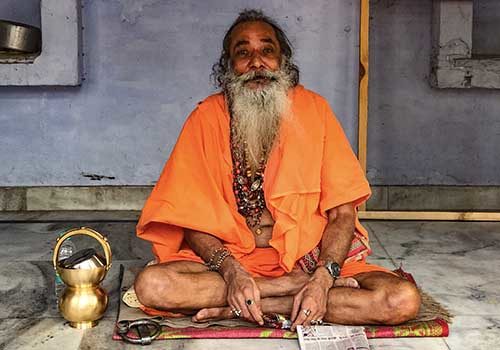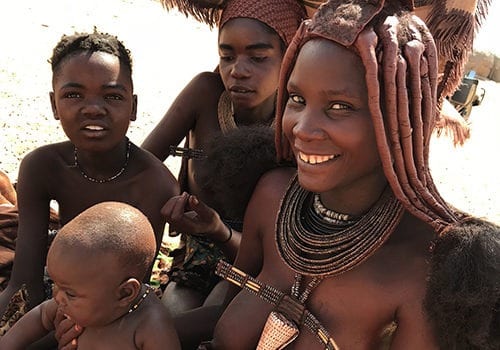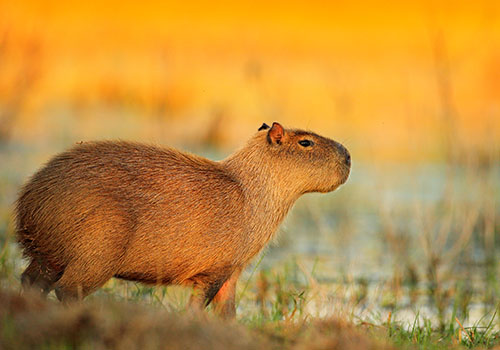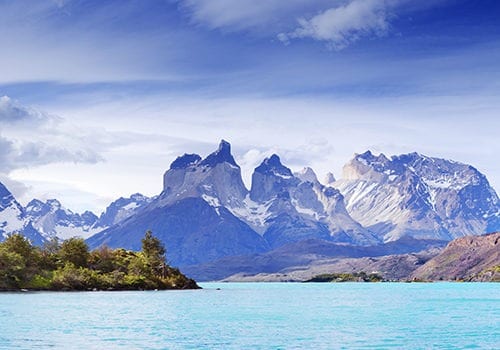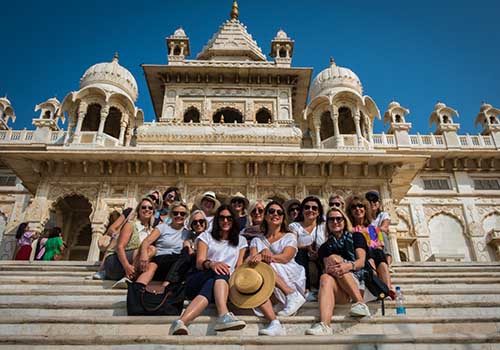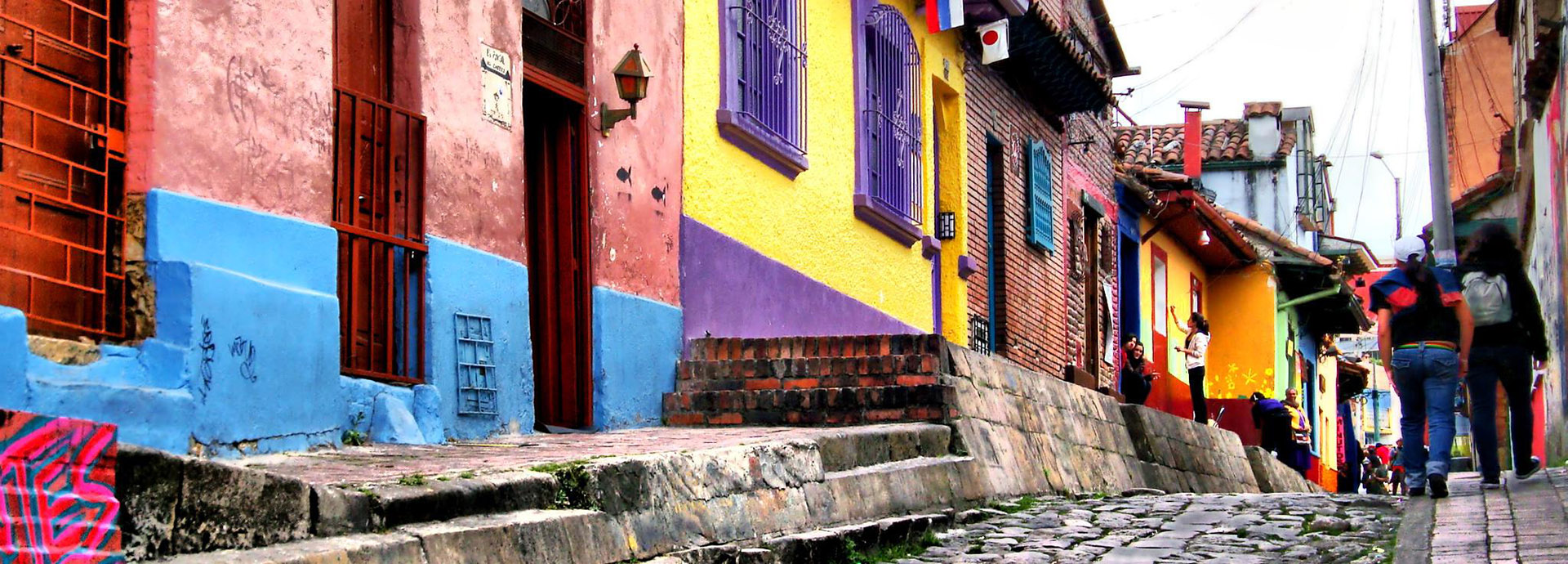
KEY INFORMATION TO PREPARE FOR YOUR JOURNEY
Colombia is a country located in the northwestern part of South America, bordered by Venezuela to the east, Brazil to the southeast, Peru to the south, Ecuador and Panama to the west, and the Caribbean Sea to the north. Famous for its diverse geography, Colombia features lush rainforests, the Andes Mountains, and beautiful Caribbean and Pacific coastlines. Tourist highlights include the historic city of Cartagena with its well-preserved colonial architecture, the vibrant capital city of Bogotá, the coffee-producing region with its picturesque landscapes, and the archaeological wonders of San Agustín. Colombia is celebrated for its warm hospitality, lively music and dance, and a growing reputation as a must-visit destination in South America.
PLEASE NOTE: All pre-departure information was correct at the time of writing, but should be used as a guide only since requirements can change at short notice and without warning. Consult Smart Traveller or contact the Embassy of the Republic of Colombia or the appropriate authority prior to departure to confirm all details.
AT A GLANCE
COLOMBIA KEY FACTS
Time: GMT – 5 hours | AEST – 15 hours
Capital: Bogota
International Airport(s): El Dorado International Airport in Bogota (BOG)
Official languages: Spanish is the official language
Religion: The predominant religion in Colombia is Christianity, specifically Roman Catholic
Electrical Current: 110 volts | Adaptor type A or B with two flat pins (B has a grounding pin)
Currency: Colombian Peso | COP
Australian Embassy Bogota: Edificio Tierra Firme, Avenida Carrera 9 No. 115-06/30, Oficina 2003, Bogotá | T: (+57) 1 6578030 | E: bogota.embassy@dfat.gov.au | https://colombia.embassy.gov.au/
Visa: No – Australian passport holders do not require a visa for stays of up to 90 days.
USEFUL WEBSITES
Smart Traveller – https://www.smartraveller.gov.au/destinations/americas/colombia
Travel Doctor-TMVC – https://www.traveldoctor.com.au/destinations/colombia
Embassy of the Republic of Colombia in Canberra – https://australia.embajada.gov.co/
PUBLIC HOLIDAYS
January 1: New Year’s Day
January 6*: Epiphany Day
March 19*: Saint Joseph’s Day
Thursday before Easter: Maundy Thursday
Friday before Easter: Good Friday
May 1: Labour Day
39 days after Easter Sunday: Ascension Day
60 days after Easter Sunday: Corpus Christi
68 days after Easter Sunday: Feast of the Sacred Heart
June 29*: Feast of Saints Peter & Paul
July 20: Independence Day
August 7: Battle of Boyaca Day
August 15*: Assumption of Mary
October 12*: Columbus Day
November 1*: All Saints’ Day
November 11*: Cartagena Independence Day
December 8: Feast of the Immaculate Conception
December 25: Christmas Day
*Movable holiday: when they do not fall on a Monday, these holidays are observed on the following Monday

PASSPORT & VISA REQUIREMENTS
PASSPORTS
Your passport must be valid for at least six months after your return to Australia and have at least two blank pages for every entry and country you intend to visit on your journey. If your passport does not meet these requirements you must obtain a new one. The Australian Passport Office website is www.passports.gov.au.
It is a wise precaution to carry a photocopy of your passport separately and leave a copy at home. This will aid authorities in processing a new passport should yours get stolen or lost.
If you have dual citizenship and more than one passport, we strongly recommend that you use only one of these during your travels, as in some countries it is considered illegal to have two or more passports. Be sure to use the same passport on entry and exit from a country, and never surrender your passport.
If your passport name is different to your commonly used name, advise us of this and ensure your airline reservations match those of your passport name.
VISAS
Australian and New Zealand passport holders do not require a visa to enter Colombia.
Visa-free entry for Australian & New Zealand Passport holders is valid for a maximum duration stay of three months (90 days) from your date of entry.
CLIMATE, WEATHER & SEASONS
CLIMATE
Colombia has a diverse climate due to its varied topography and proximity to the equator. The country generally experiences four climatic zones:
Tropical Lowlands: The coastal and Amazon regions have a tropical climate with high temperatures and significant rainfall throughout the year.
Tropical Highlands: Cities like Bogotá, located at higher altitudes, have a cooler climate. Temperatures can vary, but it tends to be more temperate overall. There are distinct wet and dry seasons.
Arid Regions: Some parts of northern Colombia, particularly the La Guajira Peninsula, have arid or semi-arid conditions with low rainfall.
Cold Highlands: The Andean mountain regions can be quite cold, especially at higher elevations. Popayán and Pasto, for example, have cooler temperatures.
KEY SEASONS
- Dry Season (Verano): The dry season typically occurs from December to March and July to August. During this time, many regions, especially in the Andean and coastal areas, experience lower rainfall and more stable weather conditions, making it a popular time for travel and outdoor activities.
- Rainy Season (Invierno): The rainy season, occurring from April to June and September to November, brings increased rainfall, especially in the tropical lowlands and Amazon regions. While some areas may experience occasional heavy rains and storms, the country’s lush landscapes are at their most vibrant during this time.
| BOGOTA | JAN | FEB | MAR | APR | MAY | JUN | JUL | AUG | SEP | OCT | NOV | DEC |
|---|---|---|---|---|---|---|---|---|---|---|---|---|
| Temperature (°C) | 6-20 | 7-21 | 8-20 | 9-20 | 9-20 | 9-19 | 9-19 | 8-19 | 7-20 | 8-20 | 8-20 | 7-20 |
| Rainfall (mm) | 30 | 45 | 65 | 100 | 95 | 55 | 45 | 45 | 70 | 105 | 90 | 50 |
| CARTAGENA | JAN | FEB | MAR | APR | MAY | JUN | JUL | AUG | SEP | OCT | NOV | DEC |
|---|---|---|---|---|---|---|---|---|---|---|---|---|
| Temperature (°C) | 24-31 | 24-31 | 24-31 | 25-32 | 26-32 | 26-32 | 25-32 | 25-32 | 25-32 | 25-32 | 25-32 | 24-32 |
| Rainfall (mm) | 4 | 1 | 2 | 25 | 115 | 100 | 110 | 125 | 135 | 230 | 140 | 35 |

LUGGAGE & PACKING
CLOTHING
When visiting Colombia, it’s essential to consider the country’s diverse climate, culture, and activities. Here are some clothing tips:
Dress in Layers: Colombia has a variety of climates due to its diverse geography. In Bogotá, for example, it can get cool, especially in the evenings. In contrast, coastal areas like Cartagena are hot and humid. Dressing in layers allows you to adapt to changing temperatures.
Comfortable Shoes: Comfortable and durable walking shoes are a must, especially if you plan to explore cities or hike in the natural landscapes. Colombia has beautiful outdoor destinations like national parks and coffee plantations that might involve walking or trekking.
Lightweight Clothing: In warmer regions like Cartagena and Medellín, lightweight and breathable clothing is essential. Cotton and linen are good choices to keep cool in the heat.
Rain Gear: If you’re visiting during the rainy season, which varies depending on the region, consider bringing a compact rain jacket and an umbrella. Waterproof shoes might also be beneficial.
Sun Protection: Colombia’s proximity to the equator means the sun can be intense. Pack sunscreen, sunglasses, and a wide-brimmed hat to protect yourself from UV rays.
Casual and Smart-Casual Clothing: Colombians generally dress well, so it’s a good idea to bring some smart-casual outfits, especially if you plan to dine in upscale restaurants or attend cultural events. For everyday activities, casual clothing like jeans and T-shirts is acceptable.
Swimwear: If you’re visiting coastal areas or staying in hotels with pools, pack swimwear. Colombia has beautiful beaches, and you won’t want to miss the opportunity to enjoy them.
Modesty in Certain Areas: In some rural and traditional areas, it’s advisable to dress more modestly, especially for women. Avoid overly revealing clothing to respect local customs.
Adaptable Accessories: A versatile scarf or shawl can be useful for cooler evenings or as a cover-up in more conservative areas. It can also add a touch of style to your outfits.
Daypack or Crossbody Bag: A small daypack or a crossbody bag is handy for carrying essentials during day trips and excursions.

HEALTH & VACCINATIONS
HEALTH & VACCINATIONS
It may be necessary to take medical precaution prior to, and whilst travelling. As we are not qualified to offer advice, we recommend you contact your GP or the Travel Doctor-TMVC who have the most up‐to-date information available and can tailor their advice to your specific needs. Requirements are highly personal depending on your health profile and the activities in your itinerary.
Some vaccinations must be given well in advance of travel, so we suggest seeking medical advice as soon as you start to plan your trip. Be sure to ask what vaccinations or medications may be required to enter Colombia and to re-enter Australia.
You can also refer to SmartTraveller for a guide as to what may be required, however you should always seek professional medical advice before travelling.
FOOD & DRINK
- Drink boiled water or bottled water with sealed lids and avoid ice cubes, except in lodges and hotels where water quality is tested and assured.
- If in doubt, avoid raw and undercooked food, such as salads, as well as dairy products which are often unpasteurized. Gastrointestinal diseases are more common during the rainy season.

GENERAL RECOMMENDATIONS
For all insect-borne diseases the best advice is to cover up – use insect repellent, mosquito nets and wear long, loose, light-coloured clothing
YELLOW FEVER: Yellow fever is widespread and vaccinations are compulsory for entry into Colombia. Proof of Yellow Fever inoculation is also required for entry into other countries after visiting Colombia and for re-entry into Australia. Speak to your GP or a travel doctor about this.
ZIKA VIRUS: Zika virus is widespread. The Australian Department of Health advises pregnant women to discuss travel plans with a doctor and consider deferring non-essential travel to affected areas.
MALARIA: Malaria is a risk in all areas below 800m, which excludes Bogotá.
ALTITUDE: High altitude can affect some people’s health so visitors to areas of Colombia above 2,500m such as Bogota (2,640m), are advised to take it easy for the first few days. When at altitude, be aware of the symptoms and ensure your travel insurance covers costs relating to evacuation from high-altitude areas. To help alleviate altitude sickness, we recommend you get enough rest, drink lots of liquids (still water, coca tea and avoid anything carbonated) and eat lightly. We also recommend avoiding heavy food for the first few days as digestion takes longer in altitude (digestion requires oxygen).

MONEY MATTERS
CURRENCY AND EXCHANGE
The official currency is the Colombian Peso (COP). It’s recommended to have some local currency for small purchases in markets and rural areas.
US Dollars are the easiest currency to exchange and many restaurants, hotels and shops in the main cities accept dollars for payment, however they may not offer you the most favourable exchange rate. It is best to exchange money at banks or authorised exchange offices. It is recommended that you DO NOT change money on the black market as you are more likely to receive a lower rate of exchange or fake notes.
Credit cards are widely accepted in urban areas, especially in hotels, restaurants, and shops. Visa and MasterCard are commonly used, while American Express and other cards may not be accepted in all places. However, in more rural or remote areas, cash may be the preferred payment method.
ATMs are widely available in major cities and towns. Use ATMs in well-lit and secure locations such as inside banks.
TELL YOUR BANK
We highly recommend you advise your bank of your destinations and travel dates. This should prevent any of your transactions being deemed as ‘out of the ordinary’ (and possibly stopped) due to their unexpected location.
TIPPING
Tipping is customary in Colombia. In restaurants, a service charge may be included in the bill, but it’s common to leave an additional tip for good service. When no service charge has been included then a tip of 10% to 15% is recommended. In other service industries, such as taxi rides, rounding up the fare is a common practice.
Guides and transfer drivers highly appreciate receiving as deserved (USD10 for guides and USD5 for drivers per day).

SHOPPING
For a fulfilling shopping experience in Colombia, explore the vibrant markets for unique handicrafts, colourful Wayuu bags, and traditional textiles.
Look for high-quality Colombian coffee to bring home a taste of the country’s renowned flavours.
Consider purchasing an authentic Colombian hat, such as the Vueltiao. These traditional Colombian hats are woven from natural fibres and are a symbol of Colombian culture. They make for a stylish and culturally significant souvenir.
Colombia is a hub for salsa music, and you can find a variety of salsa CDs and music collections. Additionally, consider purchasing traditional musical instruments like maracas or a guiro.
In urban areas, visit reputable jewellery stores for emeralds, a gemstone for which Colombia is famous.
Don’t forget to explore local art galleries for unique paintings and sculptures.
Embrace the opportunity to immerse yourself in the country’s diverse offerings, but exercise caution, especially with valuable purchases, by buying from reputable dealers and ensuring the authenticity of items.
POWER & TECH
POWER
There are basically two main voltage systems used around the world: 110 Volt ‐ USA, Canada, Spain & Japan 220 Volt ‐ the rest of the world. In simple terms, the power supply available at the socket is roughly twice as powerful in 240V countries as in 110V countries.
The voltage in Colombia is 110 Volts. Australia operates a 220V currency and therefore you’ll need a voltage converter AND a plug adapter for Australian appliances.
The adaptor you will need for Colombia is a TYPE A or B with two flat pins (B has a grounding pin) or, alternatively you may prefer to invest in an International Travel Adaptor that provides you with more than one option.
Alternatively you may prefer to invest in an International Travel Adaptor that provides you with more than one option.
Many adaptors also have a USB port so you can plug your smart phone, or I‐product directly into the adaptor.
For the latest & most up to date information about voltage and what adaptors to travel with refer to: www.korjo.com
ADAPTORS
Colombia uses a 110V electrical current and types A or B sockets (two flat pins, type B has a grounding pin)




